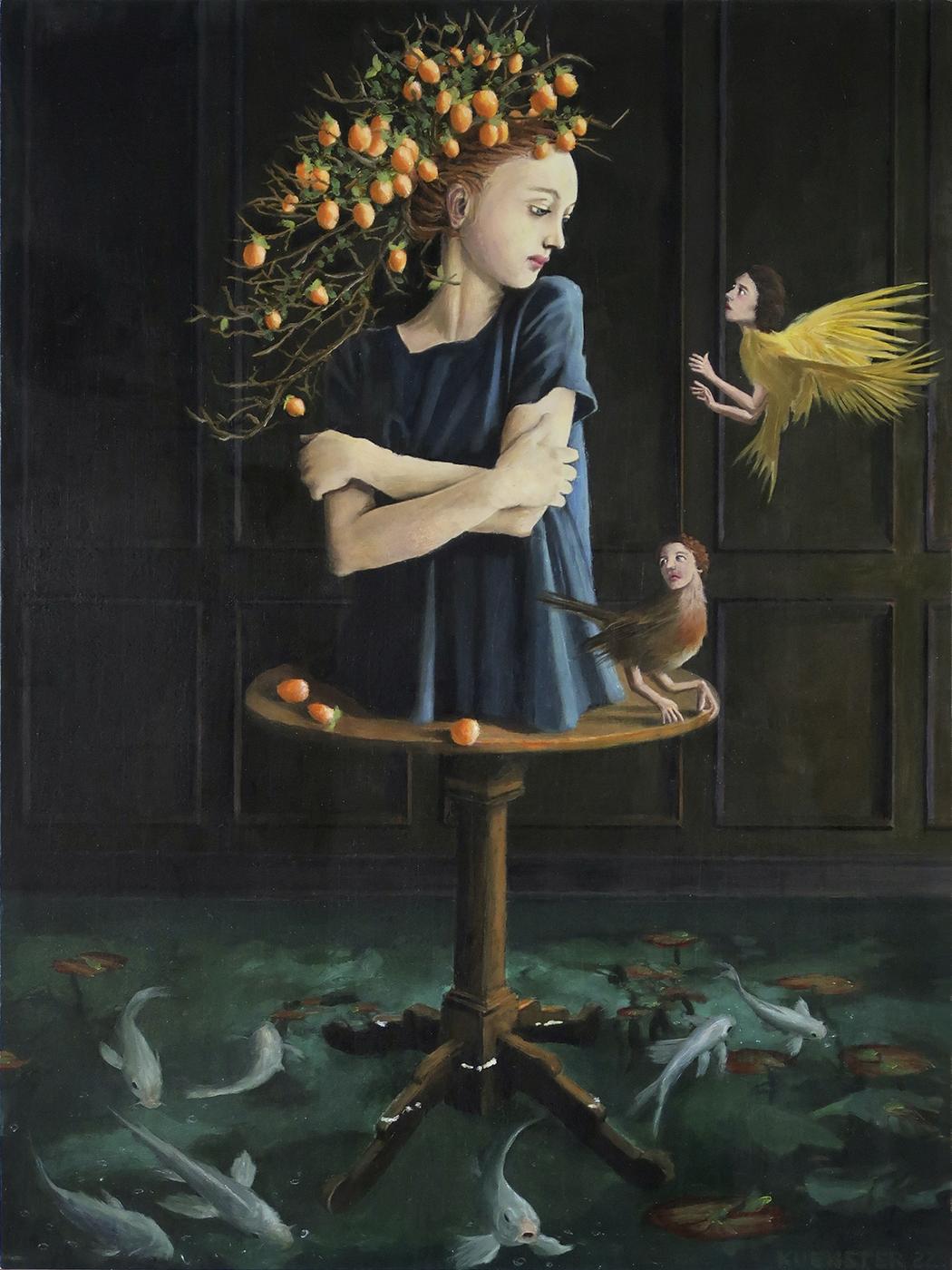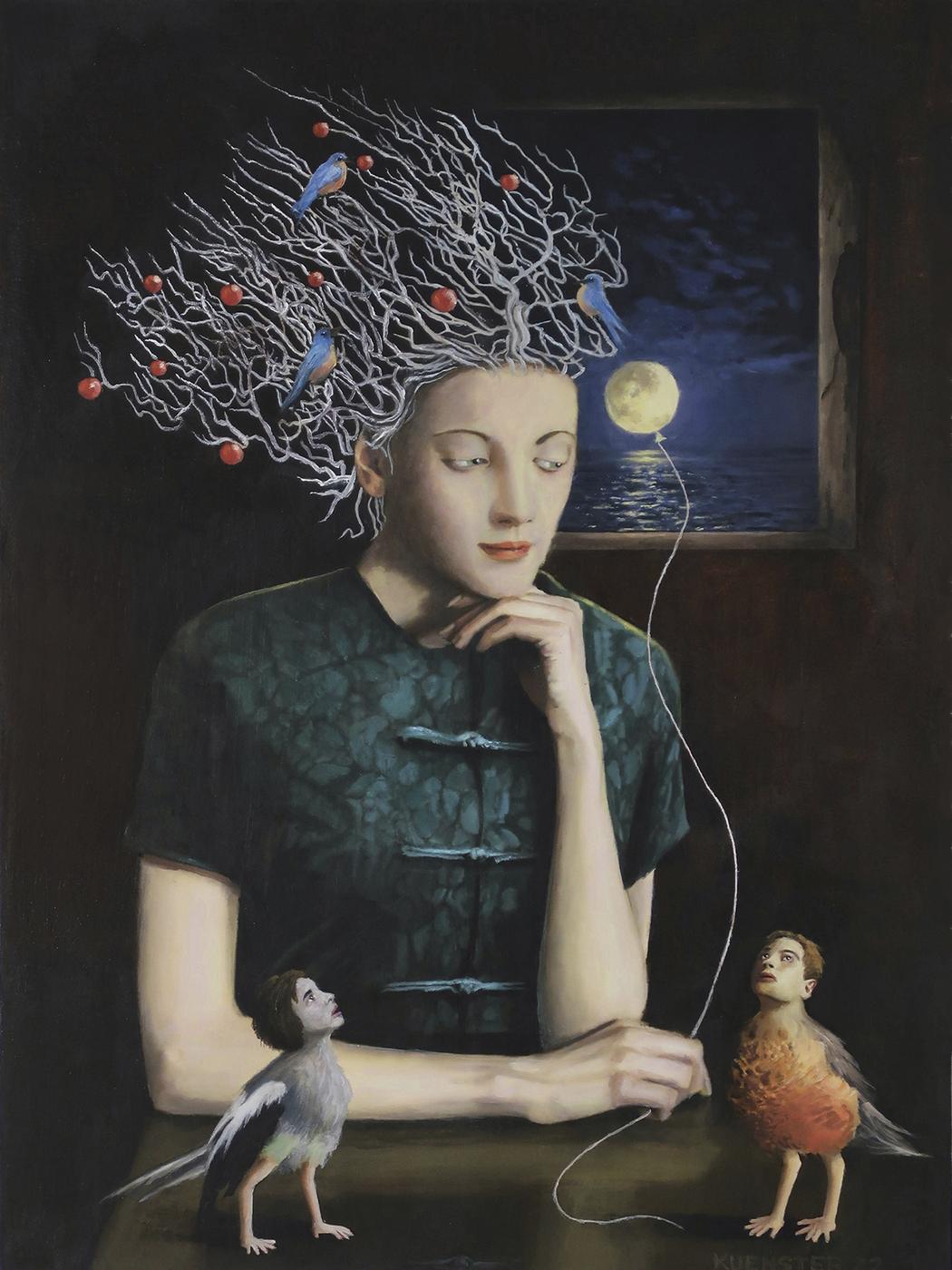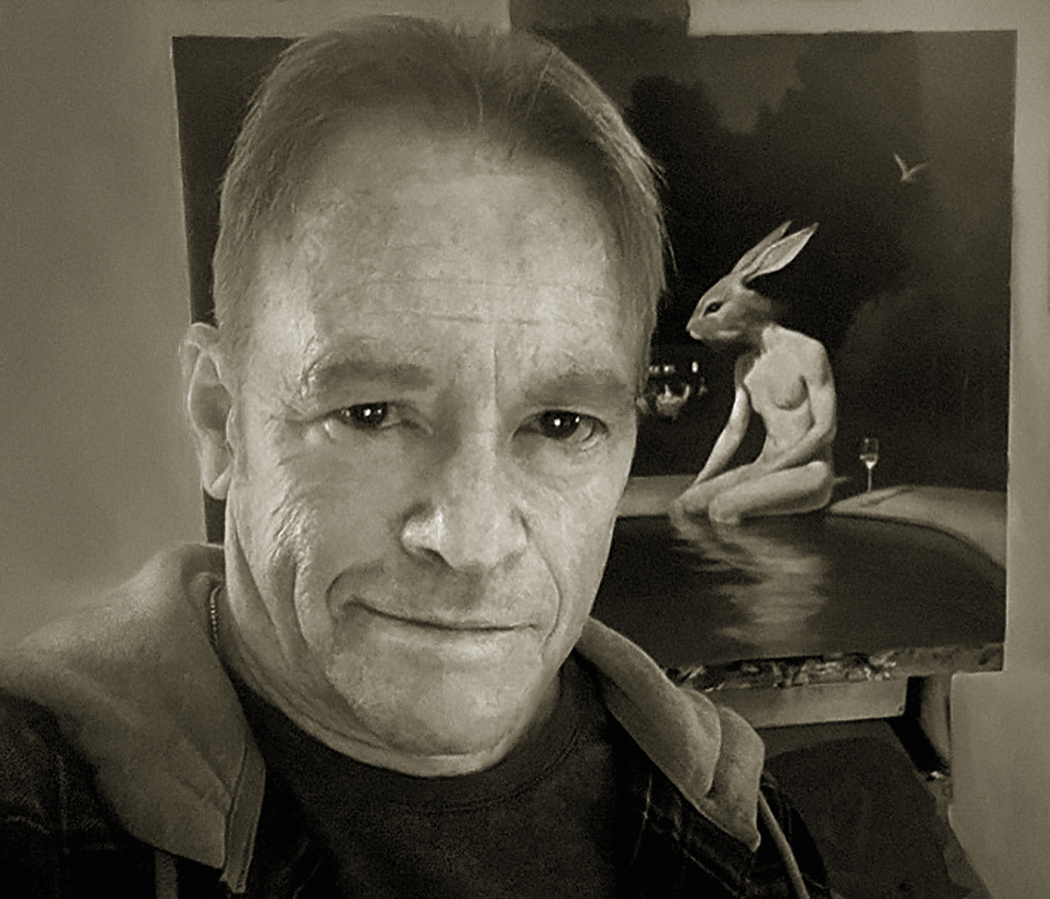Kevin Kuenster
Your paintings often feature characters with exaggerated rabbit ears. Can you tell us how this motif originated and what it symbolizes for you?
The ears are not mere whimsy, but tender disruptions: symbolic of all the things we fail to hear, they remind us that beneath our polished exteriors, we’re still just animals—overgrown with large brains, ears cocked, forever misreading the world’s faint signals.”
Many of your scenes blend domestic environments with surreal elements. How do you construct these visual narratives? Do you plan them fully, or do they evolve during the painting process?
My images evolve over a long process of experimentation. They take a lot of work. They are a slow unraveling of many dreams and obsessions. I’ve been drawn to surrealism since I first began drawing in high school, and my work undeniably carries echoes of the artists who showed me how to bend reality: the eerie stillness of Paul Delvaux’s moonlit figures, Leonora Carrington and Dorothea Tanning’s alchemical transformations, Balthus’ charged figures, and Hieronymus Bosch’s teeming, moral nightmares. These artists were masters at blurring the line between dreams and reality. Domestic spaces are often stages for the bizarre—where a tilted lampshade or a door left ajar twists familiarity into unease. I distort these familiar settings just enough to give them a kind of vertigo. The ordinary becomes a trapdoor to the surreal.
 Kevin Kuenster | Dance Of Life
Kevin Kuenster | Dance Of Life
Animals appear frequently in your work, often as symbolic mirrors to human behavior. What inspires your choice of animals, and how do you see their role in your compositions?
My use of animals as symbols cuts deep—they’re not just motifs, but silent witnesses to the violence and fragility of our world. To me their presence in my work feels like a gut-punch: a reminder that the natural world isn’t just out there, but bleeding under our hands. The disaster isn’t coming; it’s already in the room with us, ears, fur, feathers, horns and all.
There is a clear psychological and emotional undercurrent in your art. Do personal memories or experiences play a role in your visual storytelling?
I believe that all good art has a psychological and emotional undercurrent. Some works harder to interpret than others. I suppose that my imagery might be confounding to some, but it is most definitely formed by everything that I have experienced in my life.
 Kevin Kuenster | The Fruits Of Deception
Kevin Kuenster | The Fruits Of Deception
Your paintings seem to reflect both humor and melancholy. How do you strike this balance in your work?
I use humor to disarm despair, refusing to let the darkness have the last word. Kurt Vonnegut wrote, “Laughter and tears are both responses to frustration and exhaustion… I myself prefer to laugh, since there is less cleaning up to do afterward.”
What role does color play in your storytelling? Many of your scenes have a theatrical, dreamlike palette.
Colors can be subconscious whispers. That’s the magic of intuition: it bypasses the overthink and goes straight to the gut and that’s the mystery that must stay intact, like a dream that refuses to be translated.
 Kevin Kuenster | Artistic Creature 3 am
Kevin Kuenster | Artistic Creature 3 am
You’ve had a long career, including time in graphic design and fashion. How have those experiences influenced your approach to painting?
Commercial art trains us to solve problems for others; personal art is where you explore your own questions, then bury them in colors and lines like hidden treasures. To me it feels like joy. Late-blooming creativity has its own kind of magic. You’re not making up for lost time—you’re proving time was never the point.


Leave a Reply